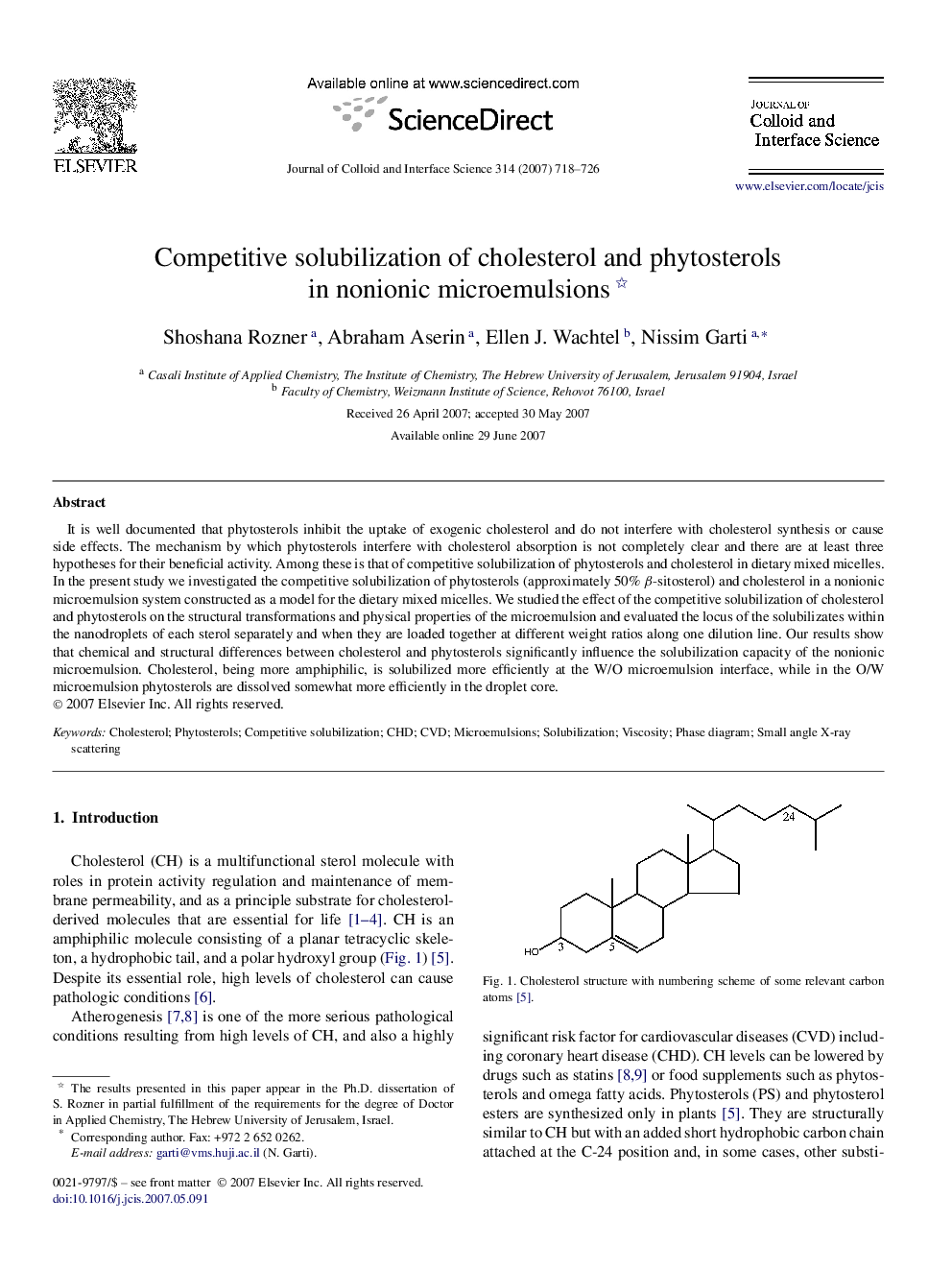| Article ID | Journal | Published Year | Pages | File Type |
|---|---|---|---|---|
| 612144 | Journal of Colloid and Interface Science | 2007 | 9 Pages |
It is well documented that phytosterols inhibit the uptake of exogenic cholesterol and do not interfere with cholesterol synthesis or cause side effects. The mechanism by which phytosterols interfere with cholesterol absorption is not completely clear and there are at least three hypotheses for their beneficial activity. Among these is that of competitive solubilization of phytosterols and cholesterol in dietary mixed micelles. In the present study we investigated the competitive solubilization of phytosterols (approximately 50% β-sitosterol) and cholesterol in a nonionic microemulsion system constructed as a model for the dietary mixed micelles. We studied the effect of the competitive solubilization of cholesterol and phytosterols on the structural transformations and physical properties of the microemulsion and evaluated the locus of the solubilizates within the nanodroplets of each sterol separately and when they are loaded together at different weight ratios along one dilution line. Our results show that chemical and structural differences between cholesterol and phytosterols significantly influence the solubilization capacity of the nonionic microemulsion. Cholesterol, being more amphiphilic, is solubilized more efficiently at the W/O microemulsion interface, while in the O/W microemulsion phytosterols are dissolved somewhat more efficiently in the droplet core.
Graphical abstractCholesterol is solubilized more effectively at a W/O microemulsion interface than phytosterols which reside preferentially within the lipophilic core of the nanodroplets once O/W is formed.Figure optionsDownload full-size imageDownload as PowerPoint slide
